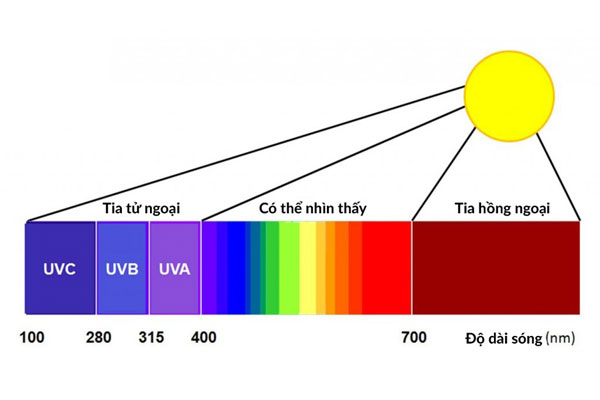Mắt người cũng tạo nên độ lệch màu ở hình ảnh thương mại điện tử
[English Below] Có khi nào bạn tự hỏi trong cùng một hình ảnh thương mại điện tử vì sao mắt của mỗi người lại nhận biết một màu khác nhau chưa? Thật ra, trong thực tế, độ nhận biết màu của mỗi cá nhân là hoàn toàn khác biệt, độ nhận biết màu của mỗi cá nhân là hoàn toàn khác biệt, chính vì thế mắt người cũng có thể tạo nên độ lệch màu ở hình ảnh thương mại điện tử. Vào năm 2015, bức hình chiếc váy đăng lên mạng xã hội đã trở thành chủ đề tranh luận của hàng triệu người trên thế giới. Nếu bạn thắc mắc tại sao lại thế thì hãy theo dõi bài viết dưới đây của Tròn House để tìm câu trả lời nhé!
Màu sắc là một trong những điều đầu tiên mà con người chỉ bảo nhau qua nhiều thế hệ. Có lẽ chẳng có gì kì lạ khi bạn có thể nhìn thấy một tấm ảnh với bầu trời màu xanh, quả chuối màu vàng hay trái tim màu đỏ,... Chúng ta đều không hề tranh luận xem bầu trời có thực sự xanh hay không, quả chuối có phải màu vàng hay không bởi vì chúng ta xem đó là điều hiển nhiên. Tuy nhiên, nếu bạn chưa biết thì vấn đề nhận định màu sắc không hề đơn giản như những gì bạn nghĩ, bộ não của chúng ta dựa vào ánh sáng đi vào mắt để quyết định xem màu ta đang nhìn là màu gì.
Mắt con người là một thấu kính và có hai loại tế bào tiếp nhận ánh sáng là tế bào hình nón và hình que, Những thụ thể hình que sẽ xử lý các yếu tố về sắc độ cũng như các trạng thái khác nhau của màu xám, đồng thời là các thụ thể hoạt động chính để tạo nên tầm nhìn ban đêm khi ánh sáng yếu. Ngược lại, các thụ thể hình nón hoạt động với ánh sáng ban ngày và cảm nhận màu. Bạn nên lưu ý rằng màu và sắc là hai khái niệm hoàn toàn khác nhau, mặc dù chúng ta vẫn thường gộp chúng lại thành một từ “màu sắc”. Các màu phân biệt với nhau bởi bước sóng ánh sáng phản xạ tới mắt, như chúng ta có màu đỏ, màu vàng, màu xanh… Còn sắc độ phân biệt bởi cường độ ánh sáng như chúng ta có đỏ nhạt, đỏ đậm, đỏ sẫm, đỏ hồng,... Source: Hioki
 |
Source: Iprety
Một người bình thường có 3 loại tế bào thụ thể hình nón trong mắt. Mỗi tế bào có thể thực hiện nhiệm vụ phân tích 100 sắc thái khác nhau của màu. Tuy nhiên thực tế lại cho thấy, nhiều mắt người bẩm sinh có thể nhận biết một số màu lệch hơn so với những màu khác - điều này là do thừa hoặc thiếu các loại tế bào thụ thể hình nón. Ngược lại, những người có quá nhiều thụ thể hình que và không có tế bào hình nón thì sẽ có hiện tượng nhìn lệch về một màu hoặc mù một số màu nhất định.
In addition to the above-mentioned reasons, there are many different reasons that also significantly affect the ability of people to perceive colors such as light source, light intensity, ... Weakness, whether outdoors or indoors, yellow or fluorescent lights, with or without windows, etc. is also one of the most important factors in determining whether the eyes perceive colors. e-commerce like.Source: Vật lí 360
Cùng là một hình ảnh thương mại điện tử, nhưng dưới điều kiện ánh sáng tác động vào mắt và bẩm sinh của mỗi người mà hình ảnh có thể khác nhau. Tuy nhiên đây lại là yếu tố gây nên độ lệch màu sắc không thể điều khiển được. Vì những lý do khách quan này mà hình ảnh kỹ thuật số sẽ chỉ ở một mức độ đúng màu tương đối và có thể sai lệch đi rất nhiều. Thực tế cho thấy các màu sắc lệch nhau về độ sáng, tối, đậm nhạt trong cùng một độ màu thì đều được chấp nhận và được bỏ qua.
Xem thêm:
Vực dậy kinh tế sau đại dịch Covid-19 - các doanh nghiệp cần chuẩn bị những gì ?
COVID-19 ĐANG THAY ĐỔI THÓI QUEN SỐNG CỦA NGƯỜI DÂN VIỆT NAM RA SAO?
TỔNG HỢP BÁO CÁO KHẢO SÁT MUA SẮM ONLINE: THẾ HỆ MILLENNIALS THÍCH GÌ?
TRÒN HOUSE
HUMAN EYES ALSO CREATE COLOR DEVIATIONS IN E-COMMERCE IMAGES
Have you ever wondered why each person's eyes recognize a different color in the same e-commerce image? In fact, the color perception of each individual is completely different, so the human eye can also create color deviations in e-commerce images. In 2015, the picture of the dress posted on social networks became a topic of debate among millions of people around the world. If you are wondering why then follow this article of Tron House to find the answer!
Color is one of the first things that people have told each other over generations. Perhaps it is not strange that you can see a picture with a blue sky, a yellow banana or a red heart, etc.We have no argument about whether the sky is really blue. No, bananas are yellow or not because we take them for granted. However, if you do not know, the problem of color perception is not as simple as you think, our brain relies on the light that enters the eye to determine what color we are looking at.
The human eye is a lens and there are two types of light-receiving cells: cones and rods, rod-shaped receptors that handle the elements of chroma as well as different states of gray. , and are the main active receptors for night vision when lighting is poor. In contrast, conical receptors operate with daylight and perceive color. You should note that colors and shades are two completely different concepts, although we often combine them into one word "color". Colors are distinguished by the wavelength of light reflected to the eye, as we have red, yellow, blue ... And chromaticity distinguished by light intensity as we have light red, dark red, red dark red, pink, ...Source: Hioki
 |
Source: Iprety
A normal person has 3 types of cones in the eye. Each cell can perform the task of analyzing 100 different shades of color. However, the fact that many human eyes are naturally born may recognize some colors more deviations than others - this is due to excess or lack of cones. In contrast, people who have too many rod receptors and do not have a conical cell will have the phenomenon of misalignment of one color or blindness of certain colors.
In addition to the above-mentioned reasons, there are many different reasons that also significantly affect the ability of people to perceive colors such as light source, light intensity, ... Weakness, whether outdoors or indoors, yellow or fluorescent lights, with or without windows, etc. is also one of the most important factors in determining whether the eyes perceive colors. e-commerce like.Source: Vật lí 360
The same is an e-commerce image but under the light conditions affecting each person's eyes and innate that images may be different. However, this is the factor that causes uncontrollable color deviations. For these objective reasons, the digital image will only be at a relatively true color level and may deviate greatly. The fact that colors are different in brightness, dark, light in the same color is accepted and ignored.
Xem thêm:
Vực dậy kinh tế sau đại dịch Covid-19 - các doanh nghiệp cần chuẩn bị những gì ?
COVID-19 ĐANG THAY ĐỔI THÓI QUEN SỐNG CỦA NGƯỜI DÂN VIỆT NAM RA SAO?
TỔNG HỢP BÁO CÁO KHẢO SÁT MUA SẮM ONLINE: THẾ HỆ MILLENNIALS THÍCH GÌ?
TRÒN HOUSE
